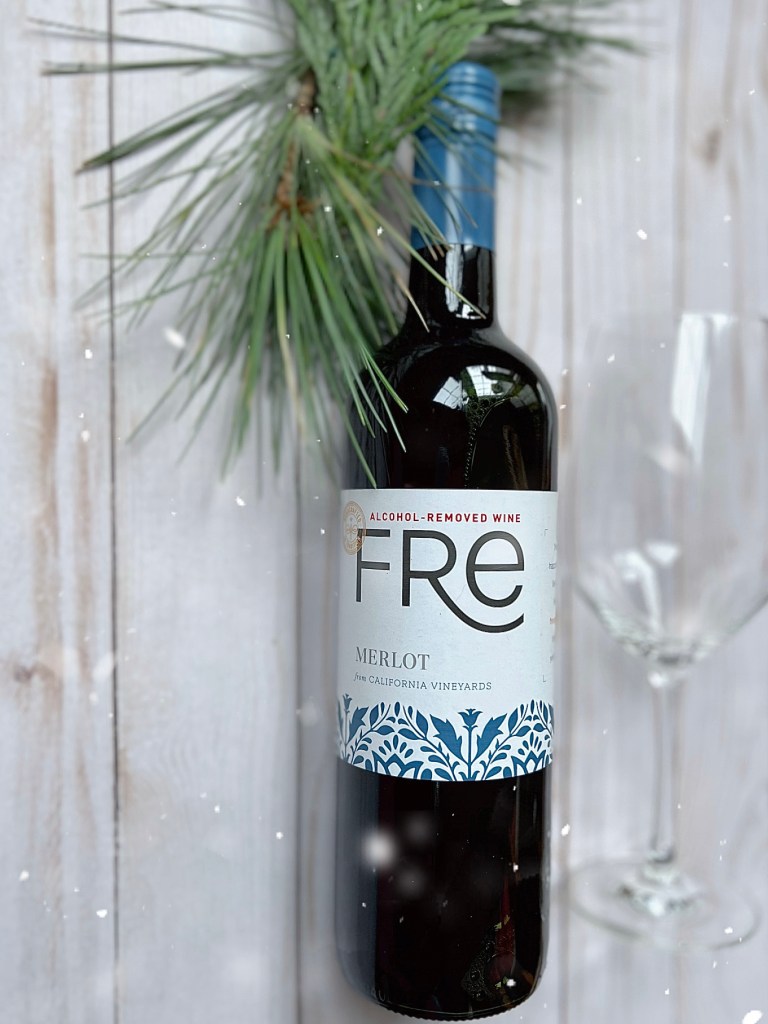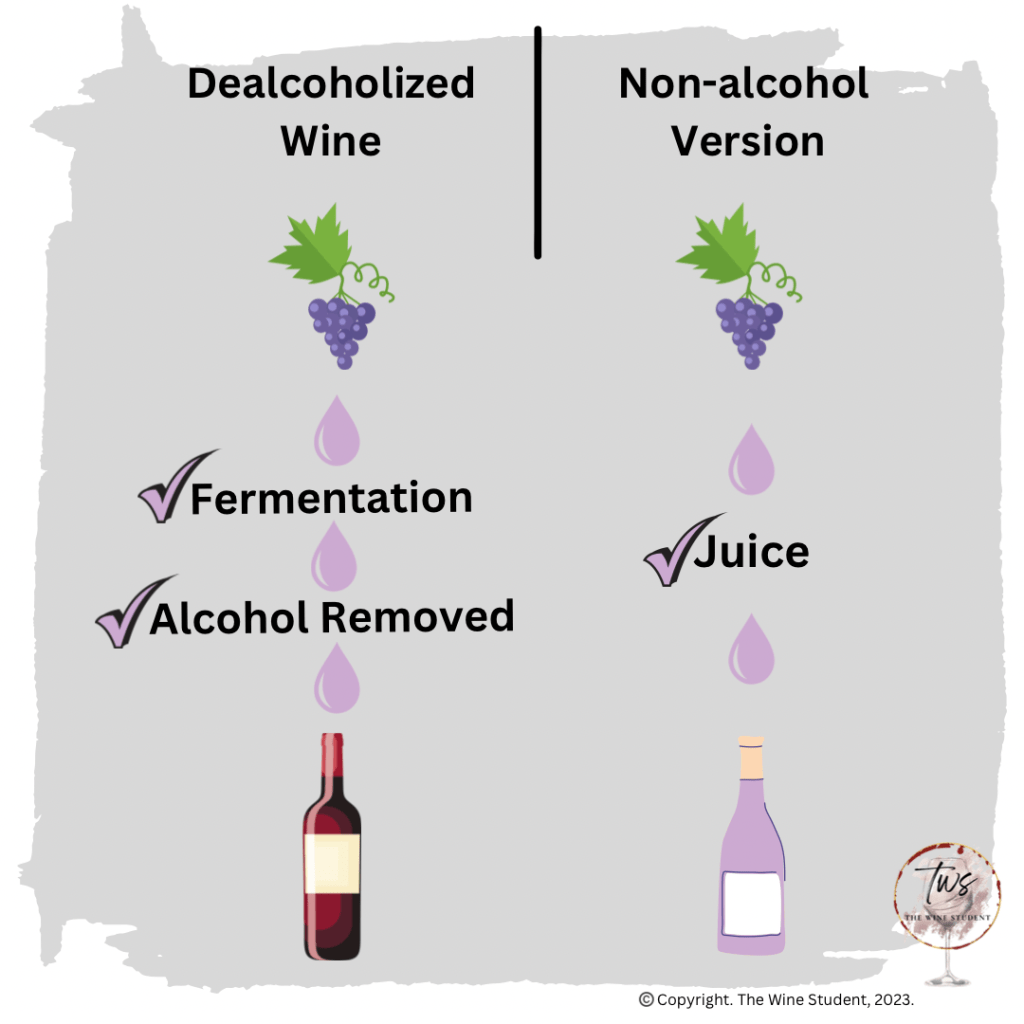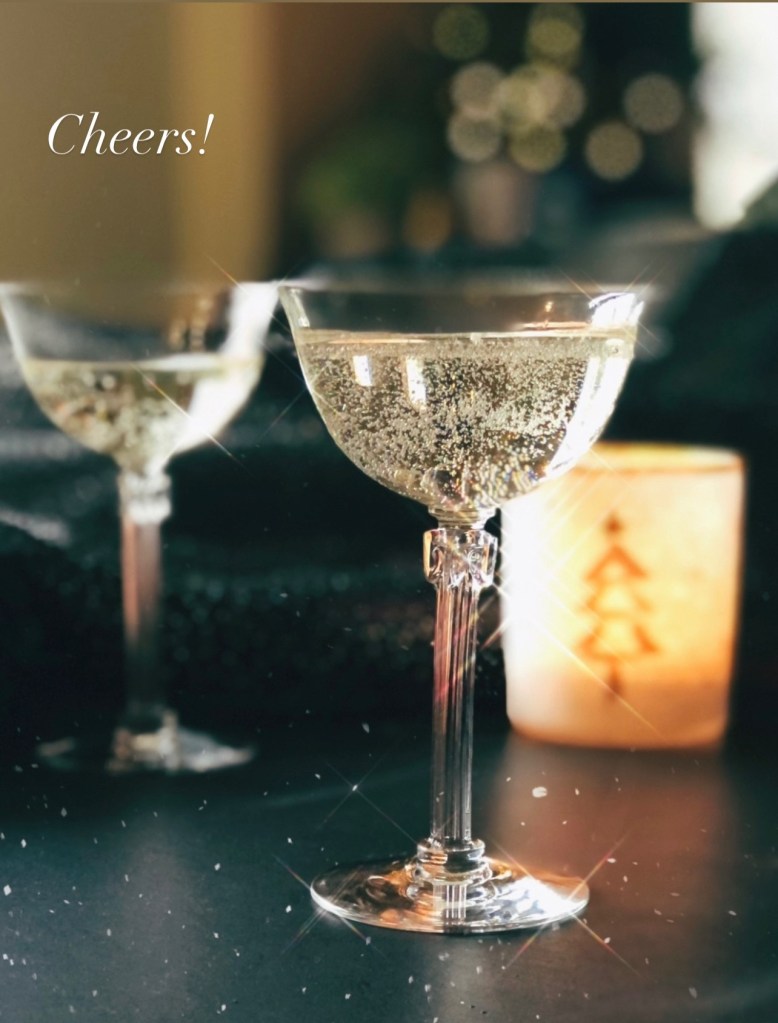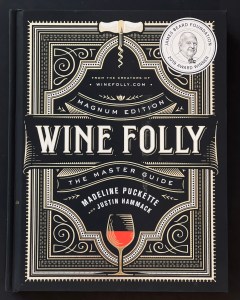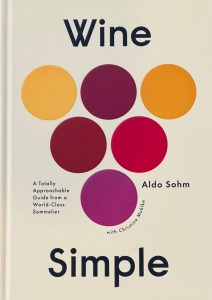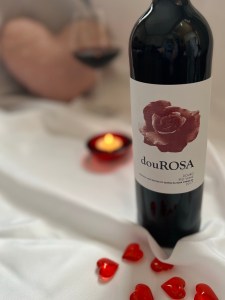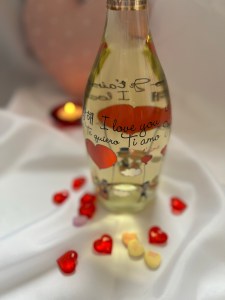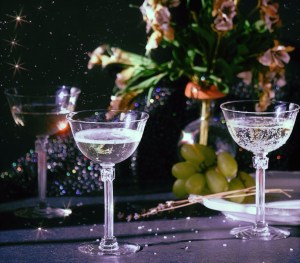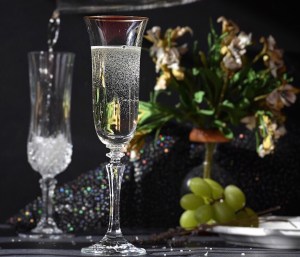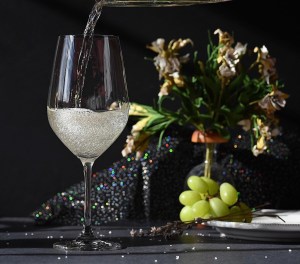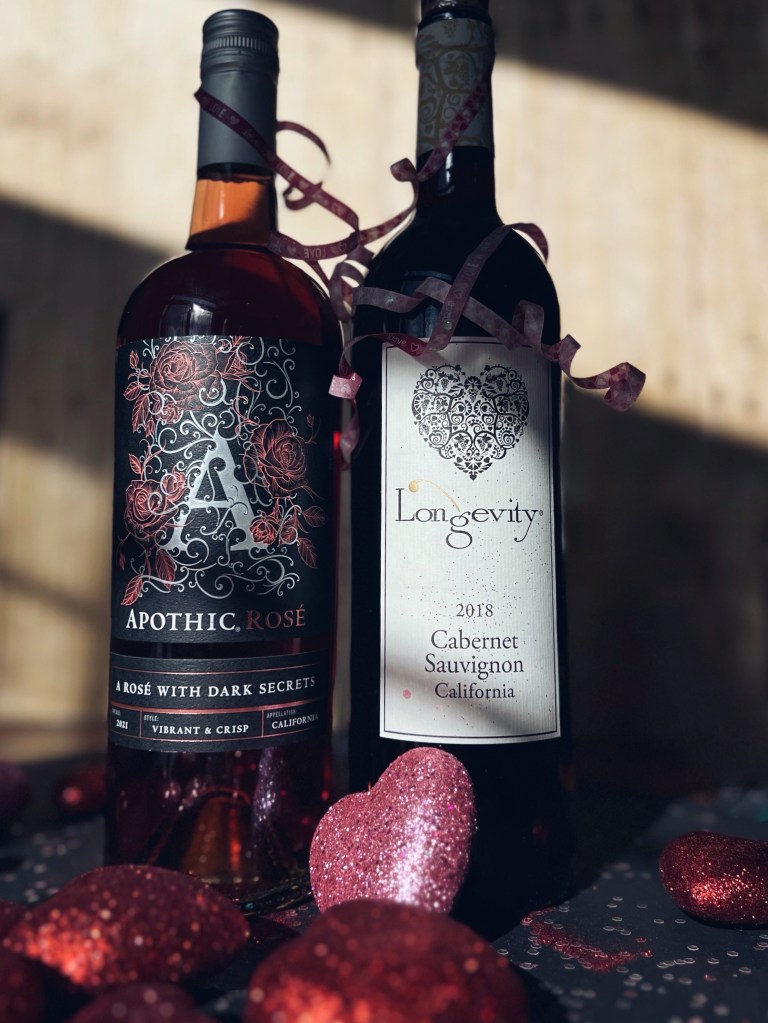
Eduardo Galeano once wrote, “We are all mortal until the first kiss and the second glass of wine.”
It’s true – that first kiss can make us feel like we’ve had that second glass of wine; dizzy, fizzy, and warm all over. Don’t get me wrong, I love me some chocolate but it doesn’t usually make me feel like that. And chocolate doesn’t always fit in my wine glass.🍫
This year, I wanted to explore a couple of intriguing alternatives to the chocolate covered heart.
Check out the video below for more info about these wines!👇
The label says that it’s the “rosé with a dark secret”. I would like to know what that secret is. Though maybe that’s what the second glass is for.
From E&J Gallo, and cultivated in Central Valley, California, this wine is a beautiful, deep rose-gold color. The classic color of many rosés is a light-medium salmon pink. This is a Grenache, Temperanillo, Pinot Noir, Sangiovese & Carignane blend that created a rich color in the glass. It had a subtle cherry vibe on the nose, and flavors of lush strawberry, ripe raspberry, and a sensual whisper of dark chocolate on the finish. Interlaced all together, it tasted like… more!
Also cool: the label art of swirling roses was designed by tattoo artist Sasha Masiuk.
💰Price point: $11.99
Longevity 2018 Cabernet Sauvignon
From the growing region of Livermore Valley, California, Longevity is one of the largest Black-owned wineries in the United States.
Deep, ruby red in color, this Cab was immediately drinkable. I tasted without decanting, and it was flavorful right out of the bottle. Often, a little merlot is blended with cabs to soften the harsh tannins. This was a cab with no harsh edges. Softer tannins made for a smooth and satiny experience, like slipping on a lux pair of silk pajamas. Classic flavors of red plum, black cherry, blackberry swirled together, with a little black licorice lingering on the finish. Together it created a deep, well-structured profile.
Their description of the wine was ‘muscular’, which is very true of most cabs. But no heavy lifting was required to enjoy this wine. This was full-bodied but not overpowering; so nice to slowly sip and savor.
The twist-off cork is genius! Like its sister the screw cap, it made opening the wine a breeze, especially if you’ve forgotten your wine key (corkscrew). It made storing even easier. No leaks!
The label is what first attracted me; a beautiful heart. Take a closer look and you’ll see the intertwining of grapes, hearts and vines. The heart was designed by Longevity’s owner, and winemaker Philip Long’s late wife-and business partner, Debra, who saw the design as an expression of their both their love of wine, and each other.
💰Price Point: $15.99
So whether you’re enjoying à deux or just celebrating you, surrender this Valentine’s to a little decadence. It’s better than chocolate!♥️🍫
Cheers!🍷💋
©️Copyright. The Wine Student. 2023

